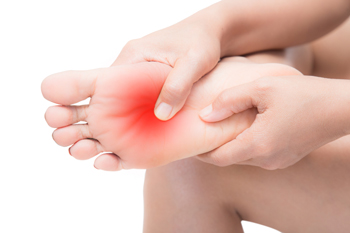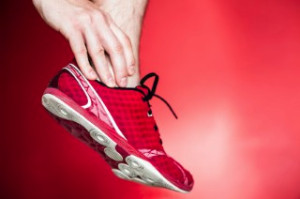Items filtered by date: September 2025
Balance and Gait After Bunion Surgery in Adults

A bunion, also known as hallux valgus, is a deformity of the big toe joint that can cause pain, swelling, and difficulty walking. Surgery is sometimes chosen when conservative treatments no longer provide relief. For middle-aged and older adults, one important consideration is how the procedure may influence balance and gait. Research has shown that correcting the alignment of the big toe can improve stability, reduce pain, and restore more natural walking patterns. However, recovery requires time and rehabilitation, and some individuals may experience temporary weakness or changes in weight distribution. Wearing proper footwear, targeted exercises, and a gradual return to activity are key factors in regaining full function. Each patient’s outcome can vary depending on health, activity level, and severity of the deformity. If you are considering bunion surgery and have concerns about balance or gait, it is suggested that you consult a podiatrist for personalized guidance and appropriate care.
Foot surgery is sometimes necessary to treat a foot ailment. To learn more, contact Amy DeGirolamo, DPM of Florida Foot and Ankle Associates. Our practitioner will assist you with all of your foot and ankle needs.
When Is Surgery Necessary?
Foot and ankle surgery is generally reserved for cases in which less invasive, conservative procedures have failed to alleviate the problem. Some of the cases in which surgery may be necessary include:
- Removing foot deformities like bunions and bone spurs
- Severe arthritis that has caused bone issues
- Cosmetic reconstruction
What Types of Surgery Are There?
The type of surgery you receive will depend on the nature of the problem you have. Some of the possible surgeries include:
- Bunionectomy for painful bunions
- Surgical fusion for realignment of bones
- Neuropathy decompression surgery to treat nerve damage
Benefits of Surgery
Although surgery is usually a last resort, it can provide more complete pain relief compared to non-surgical methods and may allow you to finally resume full activity.
Surgical techniques have also become increasingly sophisticated. Techniques like endoscopic surgery allow for smaller incisions and faster recovery times.
If you have any questions, please feel free to contact our office located in Miami,FL . We offer the newest diagnostic and treatment technologies for all your foot care needs.
Achilles Tendonitis in Ballet Dancers

Achilles tendonitis is inflammation of the tendon that connects the calf muscles to the heel bone, often caused by overuse or repetitive strain. Symptoms include pain along the back of the heel, swelling, stiffness, and discomfort that worsens with activity. Ballet dancers are especially prone to this condition because of constant jumping, pointing of the toes, and dancing on the balls of the feet, all of which place intense stress on the Achilles tendon. Without treatment, the tendon can weaken and risk further injury. A podiatrist can help by diagnosing the condition, recommending rest, stretching, and supportive footwear. If you have heel pain or stiffness, it is suggested that you consult a podiatrist who can offer appropriate treatment and relief solutions for what might be going on.
Achilles tendon injuries need immediate attention to avoid future complications. If you have any concerns, contact Amy DeGirolamo, DPM of Florida Foot and Ankle Associates. Our practitioner can provide the care you need to keep you pain-free and on your feet.
What Is the Achilles Tendon?
The Achilles tendon is a tendon that connects the lower leg muscles and calf to the heel of the foot. It is the strongest tendon in the human body and is essential for making movement possible. Because this tendon is such an integral part of the body, any injuries to it can create immense difficulties and should immediately be presented to a doctor.
What Are the Symptoms of an Achilles Tendon Injury?
There are various types of injuries that can affect the Achilles tendon. The two most common injuries are Achilles tendinitis and ruptures of the tendon.
Achilles Tendinitis Symptoms
- Inflammation
- Dull to severe pain
- Increased blood flow to the tendon
- Thickening of the tendon
Rupture Symptoms
- Extreme pain and swelling in the foot
- Total immobility
Treatment and Prevention
Achilles tendon injuries are diagnosed by a thorough physical evaluation, which can include an MRI. Treatment involves rest, physical therapy, and in some cases, surgery. However, various preventative measures can be taken to avoid these injuries, such as:
- Thorough stretching of the tendon before and after exercise
- Strengthening exercises like calf raises, squats, leg curls, leg extensions, leg raises, lunges, and leg presses
If you have any questions please feel free to contact our office located in Miami,FL . We offer the newest diagnostic tools and technology to treat your foot and ankle needs.
Inspect Your Feet Regularly for Abnormalities if You're Diabetic
Exercises That Can Help With Plantar Fasciitis

Plantar fasciitis is one of the most common causes of heel pain. Exercises that focus on the foot and ankle can help reduce discomfort and promote healing. The plantar fascia is a band of tissue that supports the arch of the foot, and when it becomes inflamed, pain often develops along the heel and sole. Stretching exercises that lengthen the calf muscles and the bottom of the foot may reduce stress on the plantar fascia. Strengthening exercises improve support and stability during walking. Movements that target the toes, such as pulling them gently back toward the ankle, can decrease tension across the arch. Strengthening the small muscles within the foot can also improve balance and lessen the load on the fascia. A podiatrist can assess the severity of plantar fasciitis, recommend safe exercises, and develop a treatment plan that may also include other supportive options. If you experience pain from plantar fasciitis, it is suggested that you schedule an appointment with a podiatrist for treatment options, including exercises.
Exercising your feet regularly with the proper foot wear is a great way to prevent injuries and build strength. If you have any concerns about your feet, contact Amy DeGirolamo, DPM from Florida Foot and Ankle Associates. Our practitioner can provide the care you need to keep you pain-free and on your feet.
Exercise for Your Feet
Exercise for your feet can help you gain strength, mobility and flexibility in your feet. They say that strengthening your feet can be just as rewarding as strengthening another part of the body. Your feet are very important, and we often forget about them in our daily tasks. But it is because of our feet that are we able to get going and do what we need to. For those of us fortunate enough to not have any foot problems, it is an important gesture to take care of them to ensure good health in the long run.
Some foot health exercises can include ankle pumps, tip-toeing, toe rises, lifting off the floor doing reps and sets, and flexing the toes. It is best to speak with Our practitioner to determine an appropriate regimen for your needs. Everyone’s needs and bodies are different, and the activities required to maintain strength in the feet vary from individual to individual.
Once you get into a routine of doing regular exercise, you may notice a difference in your feet and how strong they may become.
If you have any questions, please feel free to contact our office located in Miami,FL . We offer the newest diagnostic and treatment technologies for all your foot care needs.
Neuropathy and Its Effects on the Feet

Neuropathy is a condition that results from damage to the nerves, often affecting the feet. It can involve sensory nerves, which transmit sensations such as pain, temperature, and touch. Motor nerves control muscle movement, and autonomic nerves regulate involuntary functions like sweating and blood flow. Damage to these nerves can lead to symptoms including numbness, tingling, burning sensations, weakness, balance difficulties, and changes in skin or toenail health. Early recognition and management are vital to prevent complications. A podiatrist can evaluate nerve function, provide treatments to relieve discomfort, recommend protective footwear, and develop a comprehensive care plan. If you have unusual sensations or pain in your feet, it is suggested that you contact a podiatrist for an expert evaluation and guidance.
Neuropathy
Neuropathy can be a potentially serious condition, especially if it is left undiagnosed. If you have any concerns that you may be experiencing nerve loss in your feet, consult with Amy DeGirolamo, DPM from Florida Foot and Ankle Associates. Our practitioner will assess your condition and provide you with quality foot and ankle treatment for neuropathy.
What Is Neuropathy?
Neuropathy is a condition that leads to damage to the nerves in the body. Peripheral neuropathy, or neuropathy that affects your peripheral nervous system, usually occurs in the feet. Neuropathy can be triggered by a number of different causes. Such causes include diabetes, infections, cancers, disorders, and toxic substances.
Symptoms of Neuropathy Include:
- Numbness
- Sensation loss
- Prickling and tingling sensations
- Throbbing, freezing, burning pains
- Muscle weakness
Those with diabetes are at serious risk due to being unable to feel an ulcer on their feet. Diabetics usually also suffer from poor blood circulation. This can lead to the wound not healing, infections occurring, and the limb may have to be amputated.
Treatment
To treat neuropathy in the foot, podiatrists will first diagnose the cause of the neuropathy. Figuring out the underlying cause of the neuropathy will allow the podiatrist to prescribe the best treatment, whether it be caused by diabetes, toxic substance exposure, infection, etc. If the nerve has not died, then it’s possible that sensation may be able to return to the foot.
Pain medication may be issued for pain. Electrical nerve stimulation can be used to stimulate nerves. If the neuropathy is caused from pressure on the nerves, then surgery may be necessary.
If you have any questions, please feel free to contact our office located in Miami,FL . We offer the newest diagnostic and treatment technologies for all your foot care needs.
Running and Pain on the Outside of the Foot

Pain on the outside of the foot after running can result from several conditions. Stress fractures may develop from repetitive impact, while peroneal tendonitis occurs when the tendons along the outer ankle and foot become irritated. Cuboid syndrome involves joint misalignment in the midfoot, and arthritis can cause stiffness and inflammation. Additionally, friction blisters may also appear from wearing ill-fitting shoes or prolonged running. Each of these issues can interfere with performance and daily comfort, if left untreated. A podiatrist can identify the cause, provide targeted treatment, and recommend proper footwear or training adjustments. If running leaves you with persistent outer foot pain, it is suggested that you promptly schedule an appointment with a podiatrist today who can provide effective relief and treatment tips.
Foot Pain
Foot pain can be extremely painful and debilitating. If you have a foot pain, consult with Amy DeGirolamo, DPM from Florida Foot and Ankle Associates. Our practitioner will assess your condition and provide you with quality foot and ankle treatment.
Causes
Foot pain is a very broad condition that could be caused by one or more ailments. The most common include:
- Bunions
- Hammertoes
- Plantar Fasciitis
- Bone Spurs
- Corns
- Tarsal Tunnel Syndrome
- Ingrown Toenails
- Arthritis (such as Gout, Rheumatoid, and Osteoarthritis)
- Flat Feet
- Injury (from stress fractures, broken toe, foot, ankle, Achilles tendon ruptures, and sprains)
- And more
Diagnosis
To figure out the cause of foot pain, podiatrists utilize several different methods. This can range from simple visual inspections and sensation tests to X-rays and MRI scans. Prior medical history, family medical history, and any recent physical traumatic events will all be taken into consideration for a proper diagnosis.
Treatment
Treatment depends upon the cause of the foot pain. Whether it is resting, staying off the foot, or having surgery; podiatrists have a number of treatment options available for foot pain.
If you have any questions, please feel free to contact our office located in Miami,FL . We offer the newest diagnostic and treatment technologies for all your foot care needs.

